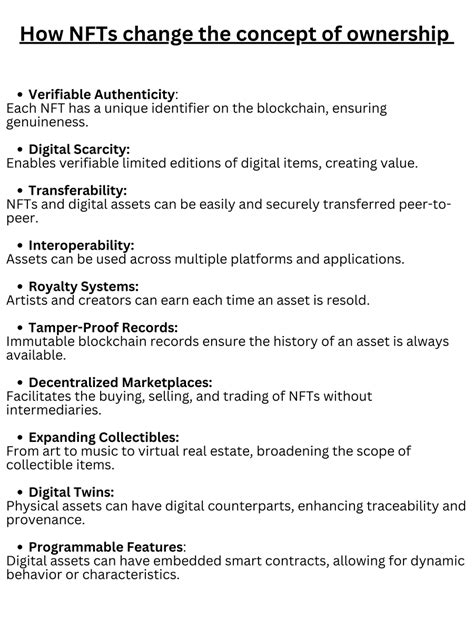The Rise of AI-Powered NFTs: Exploring the Impact on Authenticity and Ownership
NFTs, or non-fungible tokens, have revolutionized the art world and beyond. Created as a digital representation of one-of-a-kind assets, these tokens have captivated collectors, artists, and enthusiasts alike. However, with great power comes great responsibility—and in this article, we’ll delve into the impact of AI on the authenticity and ownership of NFTs.
What is an NFT?
An NFT is a digital file that represents ownership of a unique object, such as a piece of art, music, or collectible. The NFT itself has no intrinsic value; it’s simply a token that proves ownership. This means that the authenticity and legitimacy of an NFT is determined by its provenance, significance, and rarity.
The Role of AI in NFT Creation
Artificial intelligence (AI) has transformed the way NFTs are created, minted, and sold. Advanced algorithms and machine learning techniques allow artists to generate unique tokens with incredible speed and accuracy. For example:
- Art Manipulation
: AI can analyze and reproduce artistic styles, creating new works that mimic the original artist’s vision.
- Automated Tokenization: AI-powered tools can quickly create and assign NFTs to various digital assets, such as images, videos, or 3D models.
- Scalability: AI can process vast amounts of data, making it possible to create millions of unique NFTs in a short time.
The Impact on Authenticity
AI’s influence on authenticity is multifaceted:
- Authenticity by Design: As AI-powered tools generate new NFTs with incredible speed and accuracy, the concept of “originality” takes on new meaning.
- Lack of Transparency: The use of AI in NFT creation can lead to inconsistencies in provenance, making it difficult for buyers and sellers to verify authenticity.
- Digital Ownership: With AI-generated NFTs, the question arises: Who owns the token? Is it the artist, the collector, or the algorithm?
Impact on Ownership

AI’s influence on ownership raises important questions:
- Ownership by Creation: Who created a given NFT is now a topic of debate – the human artist or the AI algorithm?
- Digital Scarcity: The use of AI in NFT creation can lead to digital scarcity, as new tokens are generated at an incredible rate.
- Collectibility: With AI-generated NFTs, the concept of collectibility takes on new meaning: what does it mean for a token to be valuable or unique?
Conclusion
As AI continues to evolve and play an increasingly important role in NFT creation, ownership becomes a pressing concern. While AI can generate incredible artworks and tokens at high speed and scale, its impact on authenticity raises important questions about the nature of collectibility and digital scarcity.
To navigate this complex landscape, collectors, artists, and buyers must remain vigilant:
- Buy from trusted sources: Only purchase NFTs from established platforms with robust verification processes.
- Understand provenance: Research the artist’s story, inspirations, and creative process to better understand the authenticity of the token.
- Stay informed: Stay up-to-date on industry developments, trends, and regulatory changes that may impact NFT ownership.
As the art world continues to adapt to the influence of AI, it is essential to establish clear guidelines for the use of artificial intelligence in the creation and ownership of NFTs. In doing so, we can ensure that the integrity of these unique digital assets remains intact and that their value lies not only in their scarcity or rarity, but in their true artistic and collectible significance.
What’s next?
As AI continues to revolutionize the art world and beyond, tackling the complex issues surrounding NFT ownership will be crucial.

